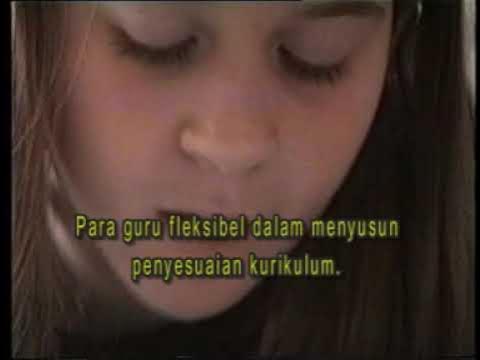“Met hoge verwachtingen garanderen we gelijke onderwijskansen voor elke leerling”
Summary
TLDRThis transcript showcases a passionate teaching approach in a kindergarten setting, where high expectations are set for every child to learn. The teacher emphasizes that all children can learn, although at different paces and levels. A structured, calm environment is maintained, and the importance of developing both knowledge and behavior is stressed. The process includes interactive lessons, from verbalizing learning objectives to hands-on activities. Through engaging teaching methods, children are encouraged to build essential skills, including vocabulary and social behavior, while also fostering curiosity and confidence. The overarching goal is to bridge learning gaps and prepare children for their next educational steps.
Takeaways
- 😀 High expectations are essential in early education, with the belief that every child can learn, though at different speeds and levels.
- 😀 It is important to instill self-belief in children from a young age, starting in preschool, so they can grow confident in their abilities.
- 😀 In preschool, high expectations not only apply to knowledge acquisition but also to behavior, setting the foundation for lifelong learning.
- 😀 The learning process is structured, with steps like setting clear lesson goals and having children articulate those goals to ensure focus and engagement.
- 😀 Teachers guide children through tasks by modeling the steps, ensuring clarity in how to complete exercises like identifying 'neighbor numbers' in math.
- 😀 A significant aspect of early education is fostering curiosity, which is a powerful tool in motivating young children to learn.
- 😀 Addressing the achievement gap is crucial, especially by providing equal learning opportunities to children from diverse backgrounds, including those from disadvantaged environments.
- 😀 Children's involvement in learning is enhanced by hands-on activities, peer support, and repetition, which fosters confidence and reinforces their knowledge.
- 😀 Language development is a key focus, with an emphasis on expanding vocabulary and using sentences rather than just isolated words.
- 😀 It's essential to balance warmth and discipline in the classroom, ensuring that children feel safe and supported while also maintaining expectations for their behavior and learning.
Q & A
What is the core belief about children's ability to learn in this educational setting?
-The core belief is that every child is capable of learning, but not all children learn at the same pace or to the same extent. High expectations are essential, starting from kindergarten.
How does the teacher structure the classroom environment to ensure a calm learning atmosphere?
-The teacher ensures a calm environment by having children stand on a designated spot in the morning, which is followed by a quiet and orderly transition into the learning space. This calmness is maintained throughout the class, enabling focused learning.
Why are learning goals written and verbalized during the lesson?
-Learning goals are written and verbalized to ensure both clarity and focus for the students. By having the goals visible and spoken, students are aligned with the teacher's objectives, which helps in maximizing learning outcomes.
What role does prior knowledge play in the lesson structure?
-Prior knowledge plays a critical role in engaging students. Before diving into new material, the teacher activates students' existing knowledge, such as reviewing numbers and their relationships, which serves as a foundation for learning new concepts.
How does the teacher guide students through the learning process?
-The teacher breaks the lesson into steps, first demonstrating the task, then practicing together with the students, followed by independent work in groups. This approach encourages active participation and helps reinforce the lesson.
What is the significance of behavior and attitude in this learning approach?
-Behavior and attitude are just as important as academic knowledge. The teacher emphasizes not only learning new concepts but also fostering the right behaviors and attitudes that will help students succeed in their overall development.
How does the teacher address the gap between disadvantaged and privileged students?
-The teacher aims to bridge the gap between disadvantaged and privileged students by providing rich learning experiences and ensuring that all children, regardless of their background, are well-prepared for the transition to first grade.
What strategies are employed to teach vocabulary and language development?
-The teacher uses a variety of strategies to build vocabulary, including interactive exercises, role-playing, and creating opportunities for children to use new words in context, both in the classroom and at home.
How does the teacher foster emotional well-being alongside academic learning?
-The teacher recognizes that emotional well-being and learning are interconnected. Positive learning experiences, such as achieving small successes, lead to improved feelings of well-being, which in turn foster further learning.
What misconceptions about learning and well-being are addressed in the script?
-The script addresses two misconceptions: first, that emotional well-being and learning are opposites, when in fact, learning contributes to well-being; second, that discipline and warmth are mutually exclusive, when they can actually coexist to create a balanced, effective learning environment.
Outlines

This section is available to paid users only. Please upgrade to access this part.
Upgrade NowMindmap

This section is available to paid users only. Please upgrade to access this part.
Upgrade NowKeywords

This section is available to paid users only. Please upgrade to access this part.
Upgrade NowHighlights

This section is available to paid users only. Please upgrade to access this part.
Upgrade NowTranscripts

This section is available to paid users only. Please upgrade to access this part.
Upgrade NowBrowse More Related Video

An example of critical reflection for early childhood educators

Setting expectations for using ICT

Sam & Tupai Ajaib! 🌳🐿️ | Petualangan yang Tak Terlupakan!

Teaching In The Inclusive Classroom Using Choices to Teach Responsibility

Welcoming School Inklusif

ENGLISH SPEECH | SHAKIRA: Education Changes the World (English Subtitles)
5.0 / 5 (0 votes)